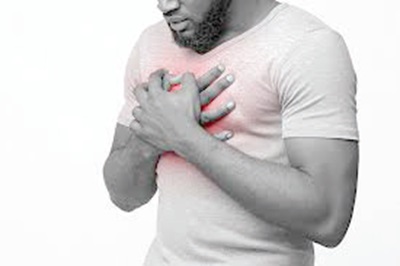
What causes heartburns?
Dear Mirror Doctor, please what causes heartburn and what should I do to stop this problem? Clarissa, Ho.
Advertisement
Heartburn is a burning feeling in the chest that typically occurs about an hour after meals.
The pain is worst when lying down, bending forward and straining to pass stools.
The pain is relieved by standing upright, swallowing saliva or water or by taking antacids.
The pain or the sensation may spread up into the throat, jaw, arms, or back accounting for why heartburn is often mistaken for a heart attack.
Heartburn occurs when acid from the stomach instead of going downward into the intestines comes back to the oesophagus in a backward fashion, causing irritation and in some cases pain.
When food is swallowed, it travels to the stomach through a hollow tube called the oesophagus (or food pipe).
Before entering the stomach, food must pass through a tight muscle at the lower end of the oesophagus called the lower oesophagus sphincter.
This sphincter prevents food from travelling backward into the oesophagus.
Once in the stomach, acid produced in the stomach digests the food.
As strong as this acid is, the wall of the stomach is protected by a special layer lining its surface, protecting it from the harsh acid production.
The oesophagus, however, does not have this special protection, therefore any acid that travels backwards to the lower part of the oesophagus damages it and cause discomfort and pain.
There are certain factors that affect the tone of the lower oesophagus sphincter and make it easier for the acid to flow back.
These include foods and drinks that lower the oesophagus sphincter tone. Leading the pack are chocolate, peppermint, caffeinated beverages, fatty foods and alcohol.
It is easier for stomach acid to flow back into the esophagus if a person is lying on the back, on the right side, or bending over.
Also, anything that increases the pressure in the abdomen, forcing acid backwards from the stomach into the oesophagus, can cause heartburn. Lifting, straining, coughing, tight clothing, obesity and pregnancy are known to worsen heartburn.
People with certain medical conditions have an increased risk of heartburn.
These conditions include hiatus hernia, diabetes and obesity, among others. Many drugs can loosen the lower oesophageal sphincter tone, including blood pressure and heart medications.
Lastly, many substances directly irritate the lining of the oesophagus and contribute to heartburn.
These include spicy foods, citrus fruits and juices, tomatoes and tomato sauces.
If small amounts of stomach acid or food travels beyond the oesophagus and up into the mouth, the person may experience bitter or a sour taste (regurgitation).
Regurgitation is common after meals, especially if the person is lying down, bending over, or straining.
Heartburn is diagnosed purely from the symptoms and does not need elaborate laboratory investigations.
In severe cases though, gastrointestinal endoscopy is done.
This involves using a special camera placed through the mouth and into the oesophagus and stomach.
This assist in diagnosing complicated heartburns.
Other tests that can be done include upper gastrointestinal series and oesophageal manometry.
For mild or occasional symptoms, simple lifestyle modifications can help provide relief of symptoms. Useful tips include avoiding large spicy meals, caffeine, smoking, alcohol and habits such as lifting and straining soon after meals.
Antacids are useful because they provide rapid but temporary relief of heartburn, especially if it is caused by foods or certain activity.
Over-the-counter antacids do not prevent recurrence of heartburn.
If the patient still has heartburn symptoms after lifestyle modifications and use of antacids, drugs are employed.
Common drugs include Histamine-2 blockers such as ranitidine (Zantac) which decrease the amount of acid the stomach produces.
If heartburn persists, metoclorpramide (maxolon), a drug that empties food and acid quickly from the stomach is used.
Maxolon also tightens the lower oesophageal muscle.
Other drugs used in heartburns as a last resort include proton pump inhibitors such as omeprazole.
These compounds prevent the stomach from secreting acid.
They are very effective and are typically taken once a day.
These drugs are usually only prescribed if other drugs have not helped the symptoms.
If prescription drugs are not relieving heartburn, or if the patient has serious complications of heartburn, surgery may be required.
The surgery is called fundoplication. Its purpose is to tighten the lower oesophageal sphincter muscle.
The stomach is repositioned in such a way as to prevent acid from flowing backward into the oesophagus.
This surgery is successful in up to 95 per cent of people, depending on the severity of the disease.
Most cases of heartburn are treated effectively with lifestyle modifications, antacids, or prescription drugs.
Relapse is common when treatment is stopped.
Other possible problems caused by acid reflux include inflammation of the throat, voice box, and airways.
Serious complications, such as bleeding or difficulty swallowing, are rare.
A complication of chronic heartburn and inflammation of the esophagus is called Barrett's esophagus.
If left untreated for years, chronic heartburn can in rare cases lead to oesophageal cancer.
[email protected]
The Mirror Doctor is a member of Paediatric Society of Ghana and the Director of Medical Affairs, Korle Bu Teaching Hospital.




